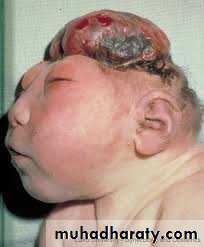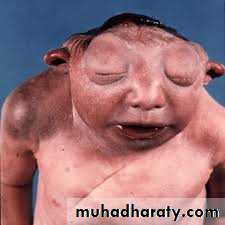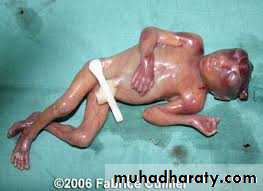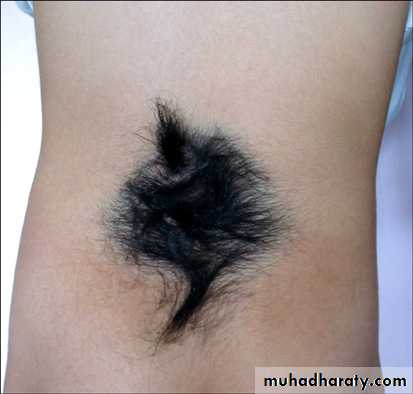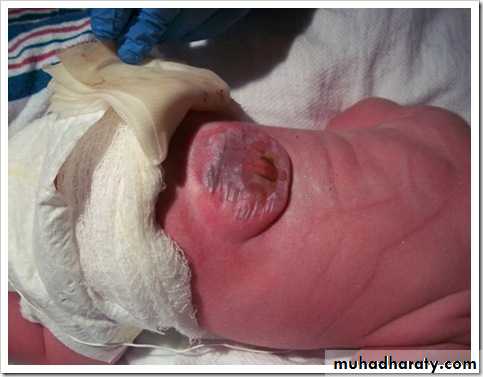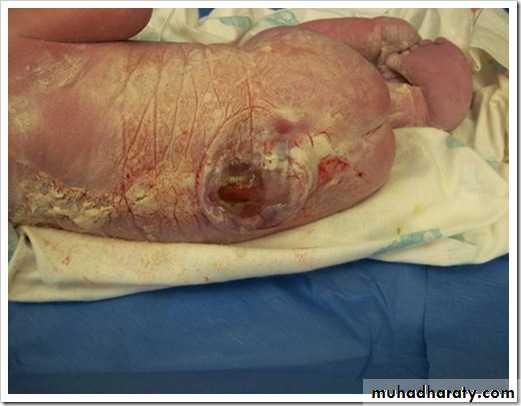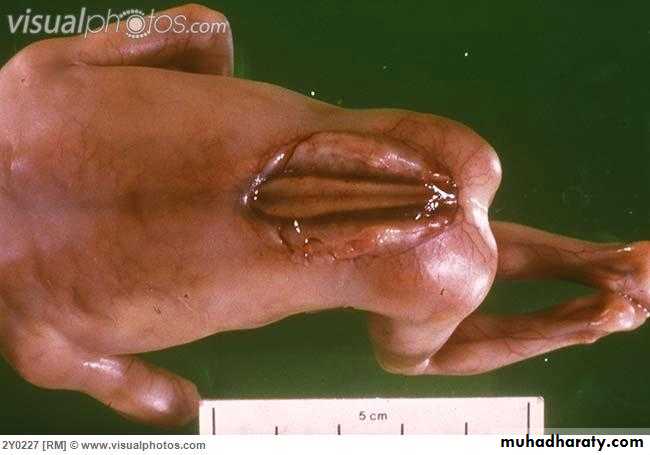Third to Eighth Week:The Embryonic Period ((organogenesis I))
The Embryonic Periodectoderm, mesoderm, and endoderm, gives rise to a number of specific tissues and organs
By the end of this period, the main organ systems established, representing the major features of the external body form.
Derivatives of the Ectodermal Germ Layer
Derivatives of the EctodermalGerm Layer
Appearance of the notochord and prechordal mesoderm induces the overlying ectoderm to thicken and form the neural plate which will form the neuroectoderm
Neurulation
Once induction occurred the neural plate gradually expands.End of 3rd week: the lateral edges be more elevated, neural folds,
Neural folds approach each other and fuse and neural tube formed.
Fusion begins in cervical region (5th somite))
Neurulation
Once induction occurred the neural plate gradually expands.End of 3rd week: the lateral edges be more elevated, neural folds,
Neural folds approach each other and fuse and neural tube formed.
Fusion begins in cervical region (5th somite))
Neurulation
Cranial and caudal neuropores:
• closure of the cranial neuropore: day 25
• posterior neuropore closes at day 28
Neurulation completed,
CNS represented as closed tubular of narrow caudal portion, the spinal cord, and broader cephalic portion having number of dilations, the brain vesicles.
Clinical correlate
Neural Tube Defects• Anencephaly
Clinical correlate
Neural Tube Defects• Spina bifida
Neural Crest Cells
At the lateral border of the neuroectodermBegin to dissociate from their neighbors
Undergo an epithelial -to-mesenchymal transition. Mesenchyme refers to loosely organized embryonic connective tissue regardless of origin .
Neural Crest Cells
Neural Crest Cells
• Ventrally…through the anterior half of each somite to become:
• sensory ganglia,
• sympathetic and enteric neurons,
• Schwann cells
• cells of the adrenal medulla
• Dorsally…through the dermis, to form melanocytes in the skin and hair follicles
Neural Crest Cells
• Crest cells from the CRANIAL neural folds:• contribute to:
• craniofacial skeleton
• neurons for cranial ganglia,
• glial cells,
• melanocytes,
• other cell types
Neural Crest Cells
• Crest cells from the CRANIAL neural folds:• By the time the neural tube is closed two bilateral ectodermal thickenings:
• Otic placodes :
• invaginate and form the otic vesicles(develop into structures needed for hearing and maintenance of equilibrium)
• Lens placodes :
• during the fifth week, form the lenses of the eyes
Derivatives of the ectoderm
• The ectodermal germ layer gives rise to organs and structures that maintain contact with the outside world:
• CNS
• PNS
• The sensory epithelium of the ear, nose & eye
• the epidermis including the hair and nail
• subcutaneous glands and the mammary gland
• the pituitary gland
• the enamel of the teeth
Derivatives of the Mesodermal Germ Layer
During the third week, sheet of loose mesodermal tissue differentiate into three parts:1.Paraxial mesoderm : thickened plates on the side of the midline. form the segmented embryonic somites.
Derivatives of the Mesodermal Germ Layer
2. Lateral Plate Mesoderm; forms two layerssomatic or parietal layer adjacent to the ectoderm
splanchnic or visceral layer adjacent to the endoderm.
3.Iintermediate mesoderm forms the embryonic urogenital system.
Derivatives of the Mesodermal Germ Layer
1.the supporting tissues as : bone, cartilage & C.T
2.muscles.
3.The CVS and the blood.
4.the lymph cells and vessels.
5.the kidneys and their ducts.
6.the gonads and their ducts.
7.the cortex of the suprarenal gland.
8.the spleen.





